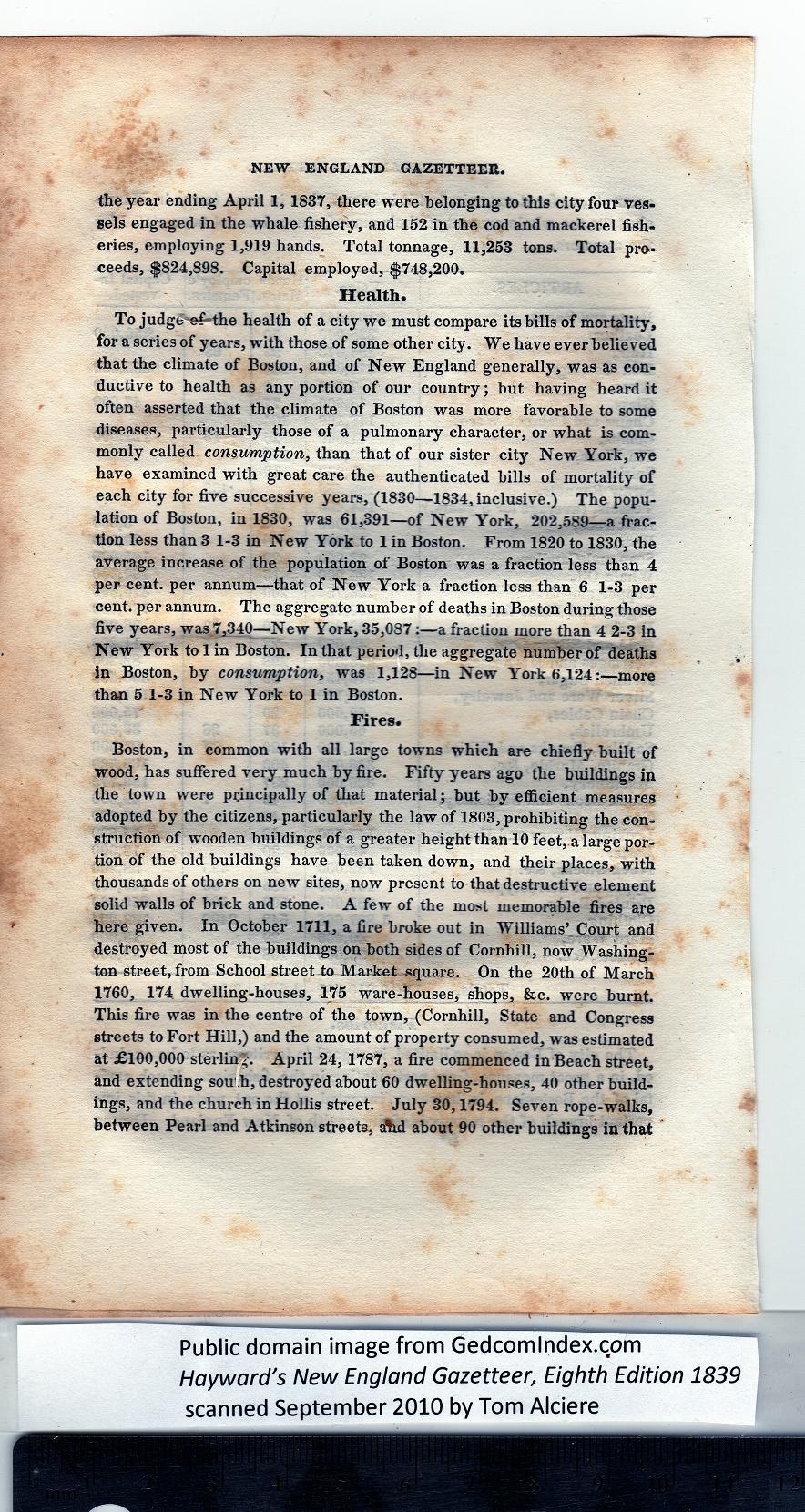|
NEW ENGLAND GAZETTEER.
the year ending April 1, 1837, there were belonging to this city four ves-
sels engaged in the whale fishery, and 152 in the cod and mackerel fish-
eries, employing 1,919 hands. Total tonnage, 11,253 tons. Total pro-
ceeds, $824,898. Capital employed, $748,200.
Health.
for a series of years, with those of some other city. We have ever believed
that the climate of Boston, and of New England generally, was as con-
ductive to health as any portion of our country; hut having heard it
often asserted that the climate of Boston was more favorable to some
diseases, particularly those of a pulmonary character, or what is com-
monly called consumption, than that of our sister city New York, we
have examined with great care the authenticated bills of mortality of
each city for five successive years, (1830—1834, inclusive.) The popu-
lation of Boston, in 1830, was 61,391—of New York, 202,589—a frac-
tion less than 3 1-3 in New York to 1 in Boston. From 1820 to 1830, the
average increase of the population of Boston was a fraction less than 4
per cent, per annum—that of New York a fraction less than 6 1-3 per
cent, per annum. The aggregate number of deaths in Boston during those
five years, was 7,340—New York, 35,087:—a fraction more than 4 2-3 in
New York to 1 in Boston. In that period, the aggregate number of deaths
in Boston, by consumption, was 1,128—in New York 6,124:—more
than 5 1-3 in New York to 1 in Boston.
Fires.
Boston, in common with all large towns which are chiefly built of
wood, has suffered very much by fire. Fifty years ago the buildings in
the town were principally of that material; but by efficient measures
adopted by the citizens, particularly the law of 1803, prohibiting the con-
struction of wooden buildings of a greater height than 10 feet, a large por-
tion of the old buildings have been taken down, and their places, with
thousands of others on new sites, now present to that destructive element
solid walls of brick and stone. A few of the most memorable fires are
here given. In October 1711, a fire broke out in Williams’ Court and
sides of Cornhill, now Washing-
Market
1760, 174 dwelling-houses, 175 ware-houses, shops, &c. were burnt.
This fire was in the centre of the town, (Cornhill, State and Congress
streets to Fort Hill,) and the amount of property consumed, was estimated
at £100,000 sterling. April 24, 1787, a fire commenced in Beach street,
and extending sou h, destroyed about 60 dwelling-houses, 40 other build-
ings, and the church in Hollis street. July 30,1794. Seven rope-walks,
between Pearl and Atkinson streets. a*hd about 90 other buildii
PREVIOUS PAGE ... NEXT PAGE
This page was written in HTML using a program written in Python 3.2 and image-to-HTML text generated by ABBYY FineReader 11, Professional Edition.
|
